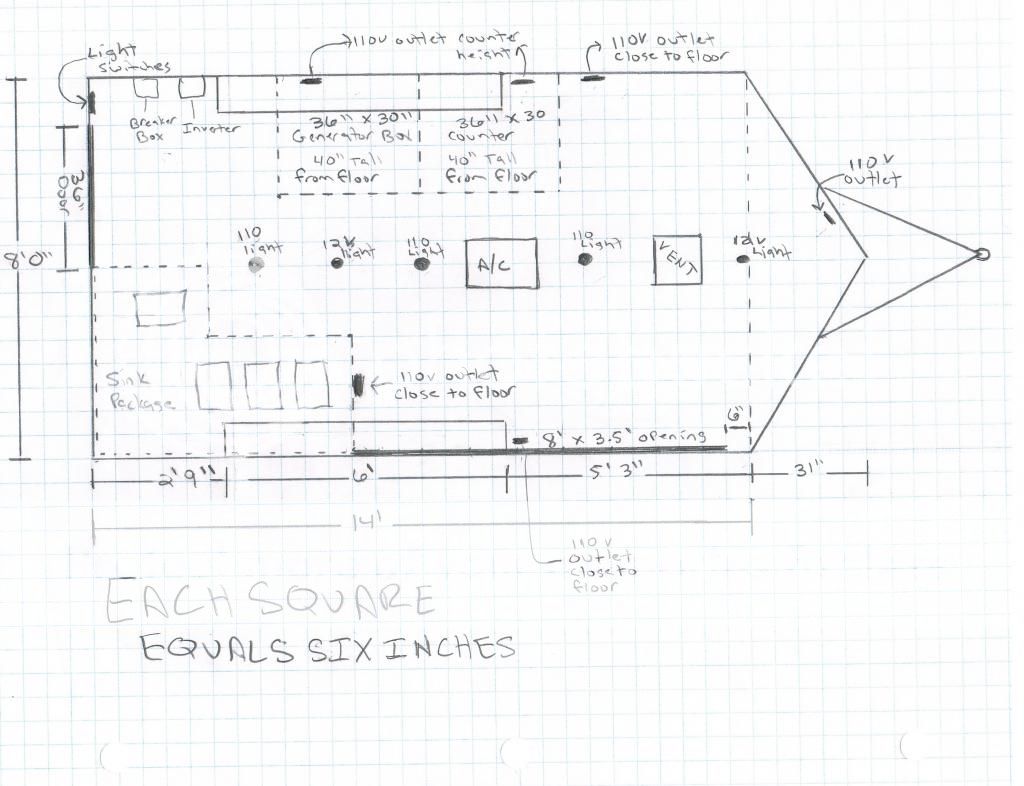Jasper7821
Well-known member
- Joined
- Apr 30, 2013
- Messages
- 165
first let me say thank to everyone on this site who has helped me with questions. My Focus buyback is complete and they put me into a new F150. The whole process took less than 30 days.
If anyone knows about battery banks and charging and can assist or let me know a forum that could help me out.
I'm building a mobile Gelato trailer and trying to build a battery bank system and looking for battery/install advise.
Everything in the trailer is on 110v and it pulls about 30 amps if the AC is running. in the summer the AC will be on all the time and the winter maybe 1/2 the time.
The inverter I was going to use is pure sine 4kw and has a surge of 12kw for 20 seconds so it should be ok if all the compressors happened to kick on at the same time.
http://www.aimscorp.net/4000-Watt-24...r-Charger.html
I was first going to use 12v AGM batteries but I think I can save money with 6v lead acid golf cart batteries and have a compartment built next to the generator box.
I'm not sure my math and conversions are right: One battery is 225ah x 6v = 1,350 watts / 120v = 11.25 amps and if used 75% drain = 8.4 amps. ? ? ?
So if I had 8 batteries that would be 67.5 amps at 75% drain that would give me 2.25hrs if the AC was running full time?
I have a really quiet Yamaha 4.5kw generator and it has one 3 prong 110v 30 amp outlet, and two 20 amp household outlets.
I was thinking of using the 3 prong plug for generator power and unplug that at night and plug it into shore power to charge the batteries. At night with the Gelato case and fridge closed, there shouldn't be much amp draw at all and hopefully the batteries can fully charge overnight.
If anyone has suggestions, WIRING DIAGRAM, or advise or a better way of doing this please let me know.
Thanks

If anyone knows about battery banks and charging and can assist or let me know a forum that could help me out.
I'm building a mobile Gelato trailer and trying to build a battery bank system and looking for battery/install advise.
Everything in the trailer is on 110v and it pulls about 30 amps if the AC is running. in the summer the AC will be on all the time and the winter maybe 1/2 the time.
The inverter I was going to use is pure sine 4kw and has a surge of 12kw for 20 seconds so it should be ok if all the compressors happened to kick on at the same time.
http://www.aimscorp.net/4000-Watt-24...r-Charger.html
I was first going to use 12v AGM batteries but I think I can save money with 6v lead acid golf cart batteries and have a compartment built next to the generator box.
I'm not sure my math and conversions are right: One battery is 225ah x 6v = 1,350 watts / 120v = 11.25 amps and if used 75% drain = 8.4 amps. ? ? ?
So if I had 8 batteries that would be 67.5 amps at 75% drain that would give me 2.25hrs if the AC was running full time?
I have a really quiet Yamaha 4.5kw generator and it has one 3 prong 110v 30 amp outlet, and two 20 amp household outlets.
I was thinking of using the 3 prong plug for generator power and unplug that at night and plug it into shore power to charge the batteries. At night with the Gelato case and fridge closed, there shouldn't be much amp draw at all and hopefully the batteries can fully charge overnight.
If anyone has suggestions, WIRING DIAGRAM, or advise or a better way of doing this please let me know.
Thanks




